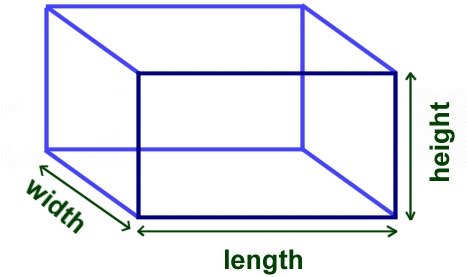Volume
The term ‘volume’ generally refers to a measurement of a three-dimensional shape that is enclosed by a closed surface. It is used to specify the amount of space that a substance such as a solid, liquid or gas occupies.
As per the International System of Units (SI), the standard unit of volume is the cubic metre (m³). The cubic metre measurement indicates the volume contained within a cube the edges of which are all 1 m long.
To be able to calculate the volume of simple shapes (e.g. regular, right angled, straight-edged), arithmetic formulae can be used, such as:
Volume = length x width x height
Whereas, more complex shapes require integral calculus if there is a formula for the shape’s boundary.
The term ‘volume’ is also used in relation to sound levels, i.e. how loud or quiet a sound is. The higher the intensity of a sound, the louder it is perceived by the ear, and the higher its volume. Decibels (dB) are most commonly used as a measure of sound volume. The decibel scale gives an approximation of human perception of relative loudness.
See also: Volume of buildings.
[edit] Related articles on Designing Buildings
Featured articles and news
RTPI leader to become new CIOB Chief Executive Officer
Dr Victoria Hills MRTPI, FICE to take over after Caroline Gumble’s departure.
Social and affordable housing, a long term plan for delivery
The “Delivering a Decade of Renewal for Social and Affordable Housing” strategy sets out future path.
A change to adoptive architecture
Effects of global weather warming on architectural detailing, material choice and human interaction.
The proposed publicly owned and backed subsidiary of Homes England, to facilitate new homes.
How big is the problem and what can we do to mitigate the effects?
Overheating guidance and tools for building designers
A number of cool guides to help with the heat.
The UK's Modern Industrial Strategy: A 10 year plan
Previous consultation criticism, current key elements and general support with some persisting reservations.
Building Safety Regulator reforms
New roles, new staff and a new fast track service pave the way for a single construction regulator.
Architectural Technologist CPDs and Communications
CIAT CPD… and how you can do it!
Cooling centres and cool spaces
Managing extreme heat in cities by directing the public to places for heat stress relief and water sources.
Winter gardens: A brief history and warm variations
Extending the season with glass in different forms and terms.
Restoring Great Yarmouth's Winter Gardens
Transforming one of the least sustainable constructions imaginable.
Construction Skills Mission Board launch sector drive
Newly formed government and industry collaboration set strategy for recruiting an additional 100,000 construction workers a year.
New Architects Code comes into effect in September 2025
ARB Architects Code of Conduct and Practice available with ongoing consultation regarding guidance.
Welsh Skills Body (Medr) launches ambitious plan
The new skills body brings together funding and regulation of tertiary education and research for the devolved nation.
Paul Gandy FCIOB announced as next CIOB President
Former Tilbury Douglas CEO takes helm.
UK Infrastructure: A 10 Year Strategy. In brief with reactions
With the National Infrastructure and Service Transformation Authority (NISTA).























